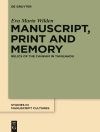In this book, the author takes a stand for a variant of panpsychism as being the best solution available to the mind-body problem. More exactly, he defends a view that can be labelled ‘dual-aspect-pan-proto-psychism’. Panpsychism claims that mentality is ubiquitous to reality, and in combination with dual-aspect monism it claims that anything, from fundamental particles to rocks, trees, and human animals, has two aspects: a physical aspect and a mental aspect. In short, the view is that the nature of reality is ‘phental’ (physical-mental). But this does not mean, according to the author, that rocks and photons think or have conscious experiences, in the sense in which human animals have experiences. This is where pan-proto-psychism enters the picture as being a better theoretical option, where the mental aspects of fundamental particles, rocks, and trees are not experiential.
Many hard questions arise here. In this book, Benovsky focuses on the combinationproblem: in short, how do tiny mental aspects of fundamental particles combine to yield macro-phenomenal conscious experiences, such as your complex experience when you enjoy a great gastronomic meal? What makes the question even harder is that the combination problem is not just one problem, but rather a family of various combination issues and worries. Benovsky offers a general strategy to deal with these combination problems and focuses on one in particular – namely, the worry concerning the existence of subjects of experience. Indeed, if standard panpsychism were true, we would need an explanation of how tiny micro-subjects combine into a macro-subject like a human person. And if panprotopsychism is true, it has to explain how a subject of experience can arise from proto-micro-mental aspects of reality. Benovsky shows that understanding the nature of subjectivity in terms of the growingly familiar notion of mineness in combination with an eliminativist view of the self, allowsus to have a coherent picture, where this type of combination problem is avoided, without throwing the baby out with the bathwater.
Daftar Isi
Chapter 1 – Pan-proto-dual-aspect-psychism.- Chapter 2 – Theoretical background, the mind-body problem.- Chapter 3 – Dual-aspect monism.- Chapter 4 – The combination problem(s).- Chapter 5 – The subject of experience.- Chapter 6 – Eliminativism.- Chapter 8 – Concluding remarks.
Tentang Penulis
Being haunted by Descartes’ evil demon thought-experiment, Jiri Benovsky began to study metaphysics in an effort to find a proof that the world really exists. He did not find that proof, but at least he found a place at the University of Neuchâtel and the University of Fribourg, in Switzerland, where he can not only go in the mountains but also spend his days thinking about things like himself (his self), existence, personal identity, possible worlds, material objects, and time. He is the author of a number of articles and of several books, mainly in the fields of metaphysics, meta-metaphysics, and aesthetics, including ‘Eliminativism, objects, and persons – the virtues of non-existence’ (2018, Routledge) where he defends a generalized eliminativist worldview, and ‘Meta-metaphysics’ (2016, Springer) where he argues that at the end of the day the evaluation of metaphysical theories is (and should be) based on their aesthetic properties – in short, we choose a metaphysical theory as being the best because we find it beautiful.












